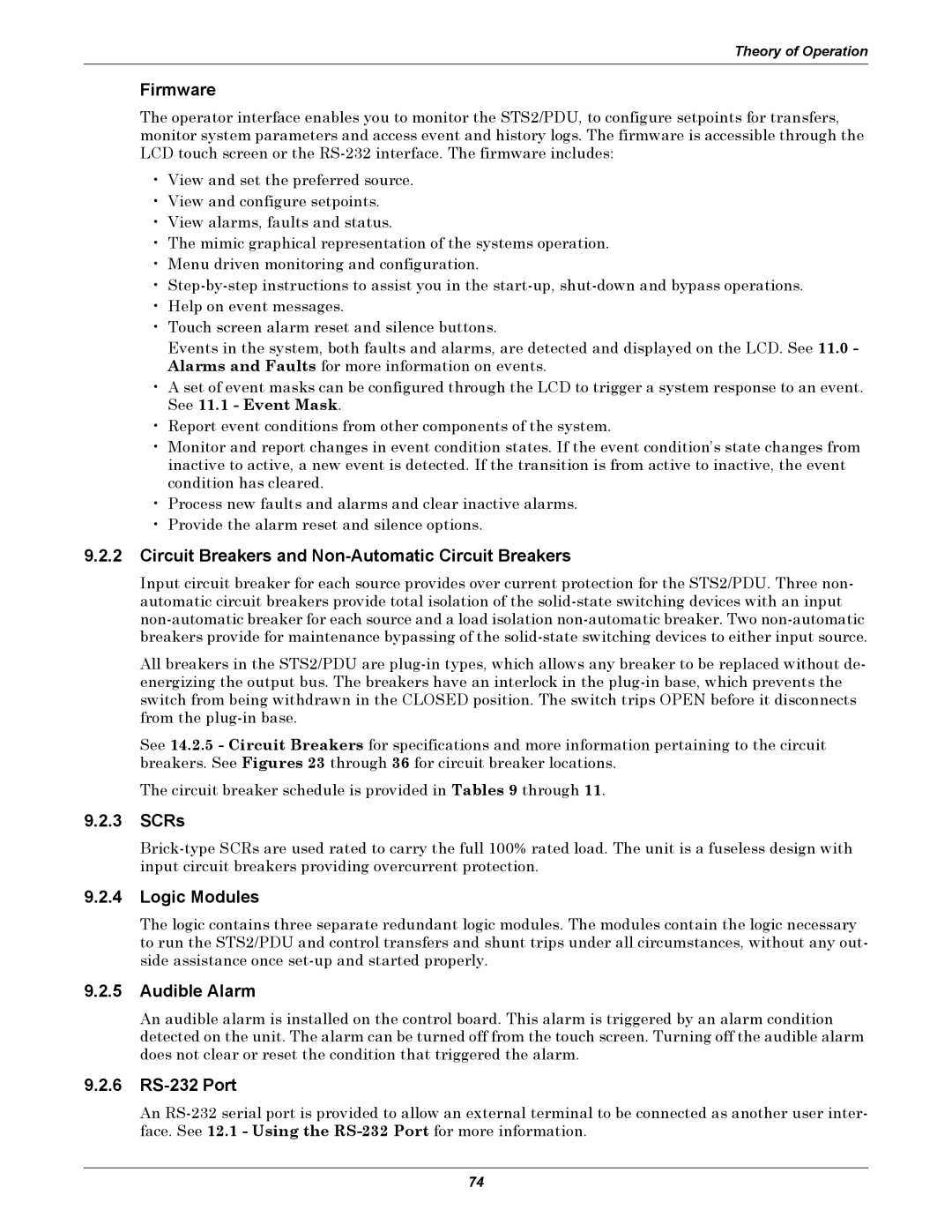
Theory of Operation
Firmware
The operator interface enables you to monitor the STS2/PDU, to configure setpoints for transfers, monitor system parameters and access event and history logs. The firmware is accessible through the LCD touch screen or the
•View and set the preferred source.
•View and configure setpoints.
•View alarms, faults and status.
•The mimic graphical representation of the systems operation.
•Menu driven monitoring and configuration.
•
•Help on event messages.
•Touch screen alarm reset and silence buttons.
Events in the system, both faults and alarms, are detected and displayed on the LCD. See 11.0 - Alarms and Faults for more information on events.
•A set of event masks can be configured through the LCD to trigger a system response to an event. See 11.1 - Event Mask.
•Report event conditions from other components of the system.
•Monitor and report changes in event condition states. If the event condition’s state changes from inactive to active, a new event is detected. If the transition is from active to inactive, the event condition has cleared.
•Process new faults and alarms and clear inactive alarms.
•Provide the alarm reset and silence options.
9.2.2Circuit Breakers and Non-Automatic Circuit Breakers
Input circuit breaker for each source provides over current protection for the STS2/PDU. Three non- automatic circuit breakers provide total isolation of the
All breakers in the STS2/PDU are
See 14.2.5 - Circuit Breakers for specifications and more information pertaining to the circuit breakers. See Figures 23 through 36 for circuit breaker locations.
The circuit breaker schedule is provided in Tables 9 through 11.
9.2.3SCRs
9.2.4Logic Modules
The logic contains three separate redundant logic modules. The modules contain the logic necessary to run the STS2/PDU and control transfers and shunt trips under all circumstances, without any out- side assistance once
9.2.5Audible Alarm
An audible alarm is installed on the control board. This alarm is triggered by an alarm condition detected on the unit. The alarm can be turned off from the touch screen. Turning off the audible alarm does not clear or reset the condition that triggered the alarm.
9.2.6RS-232 Port
An
74
